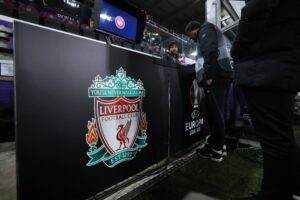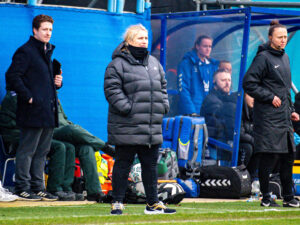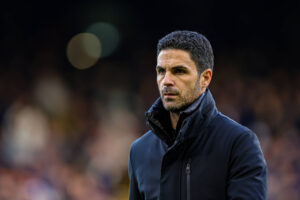Welcome back to Last Word On Football’s look at some of Liverpool’s most iconic figures. From players to managers, we look at who has an impact during their time at the club that no Liverpool fan will ever forget. Next up is legendary manager Bill Shankly.
Shankly spent 15 successful years transforming Liverpool Football Club. He collected ten pieces of silverware, including three First Division titles. From the team, to Anfield, to the training ground, Shankly revolutionised Liverpool and is seen as one of the true greats of the football club.
Bill Shankly: An Icon of Liverpool
Shankly’s Arrival
When Bill Shankly arrived on the 14th of December 1959, nobody expected him to revolutionise the club in the way he did. He inherited a side on its knees in the second division of English football and fresh off a shock FA Cup exit to non-league Worcester City. His first note as manager was to improve Anfield, with Liverpool’s iconic ground in a complete mess. Shankly insisted the club spent money improving Anfield and he got his wish, with £3000 spent on improving the facilities at the football club.
Despite the difficult surroundings of his new job, Shankly felt comfortable and ready to take the challenge on. Unity was a vital component of Shankly’s success, so much so he stuck with the coaching staff he inherited. His relationships with Bob Paisley, Joe Fagan and Reuben Bennett blossomed as the quartet began to mastermind the success to come.
The Revolution Continued
With Shankly setting up the scenes around him, matters on the pitch began to take centre stage. He was aware of how poor the playing squad was, which led to Shankly transfer-listing 24 first-team players. All of them left within a year as the rebuild continued.
Shankly also heavily criticised Liverpool’s Melwood training ground and soon began implementing plans to improve the training facilities. Modern improvements and a development programme were put into place as Shankly continued to improve the relationships between the management staff, players and fans.
Shankly’s First Trophy
With the plans in place and a new look playing squad including Ron Yeats and Ian St John, Shankly began implementing his style and tactics onto the players. His first mission was to get Liverpool back into the First Division.
Shankly’s first two seasons in charge saw Liverpool finish third in the Second Division. However, the 1961/62 finally brought promotion as Liverpool returned to the top-flight after collecting the Second Division title, a trophy which brought huge confidence and belief to the football club.
Continued Success
Following their triumph in the second division, Shankly continued to build a squad ready for the challenges ahead. Their first season back in the first division saw Liverpool establish themselves and finish eighth in the table.
Shankly continued to use the facilities he put in place as several stars continued to come through their academy, including future England internationals Ian Callaghan and Tommy Smith. The 1963/64 season brought Liverpool a sixth First Division title and Shankly’s first as Liverpool manager.
Liverpool would also collect the Community Shield a few months later ahead of the 1964/65 campaign. A major ambition of Shankly’s was to win the FA Cup and this was accomplished in 1965 as Liverpool saw off Leeds United in a pulsating final at Wembley. The 1964/65 campaign also saw Liverpool make their debut on the European stage. Liverpool reached the semi-finals, losing to Inter Milan with Shankly condemning two of the goals which saw Liverpool exit the competition.
The 1965/66 season brought more success as Liverpool secured their second First Division title under Shankly but once again they suffered further heartache on the European stage. The Reds were beaten by Borussia Dortmund in the European Cup Winners’ Cup final. The heartache in European matches would allow Shankly to analyse the difficulties of two-legged matches and make Liverpool more astute in future campaigns.
A Special Season Which Ended With European Success
The 1972/73 season is fondly remembered as one of Shankly’s greatest during his Liverpool tenure. The Reds collected another league title which would be the final of Shankly’s spell as manager. They also set a new league record for consecutive home wins when they beat Crystal Palace in December 1972. Shankly’s team made it 21 wins in a row as Anfield continued to grow as a fortress of English football.
The season ended with even more glory as Shankly collected his first and only European title as Liverpool manager. The Reds beat Borussia Monchengladbach across two legs to secure the 1973 UEFA Cup; two nights never forgotten by Liverpool fans as they beat who Shankly saw as the best in Europe to glory.
This memorable season also brought Shankly his only Manager of the Year Award as Liverpool dominated domestic football.
Departing as a True Icon
The 1973/74 campaign would prove to be Shankly’s last as Liverpool boss, with the iconic manager choosing to retire at the end of the season. His final season brought his tenth and final piece of silverware as they beat Newcastle United to collect the 1974 FA Cup.
After 737 games in charge and ten pieces of silverware, Shankly waved goodbye to the club he revolutionised and transformed into a force. He left full of pride and delight with the job he did. But admitted his one regret was not collecting the European Cup during his 15 glorious years.
Bill Shankly: A True Liverpool Icon
To this day, Shankly is considered as one of Liverpool’s greatest ever managers. He transformed the football club from top to bottom and brought success along the way. The fans idolise Shankly and he certainly is one of the reasons Liverpool are one of the biggest football clubs in world football.
Even after his death in 1981, Shankly was still being honoured and remembered by so many. Shankly entered the English football hall of fame in 2002 before entering Scotland’s hall of fame in 2004. Shankly brought so much joy to Liverpool fans throughout his 15 years and he is certainly a true Liverpool icon.
Main Photo






